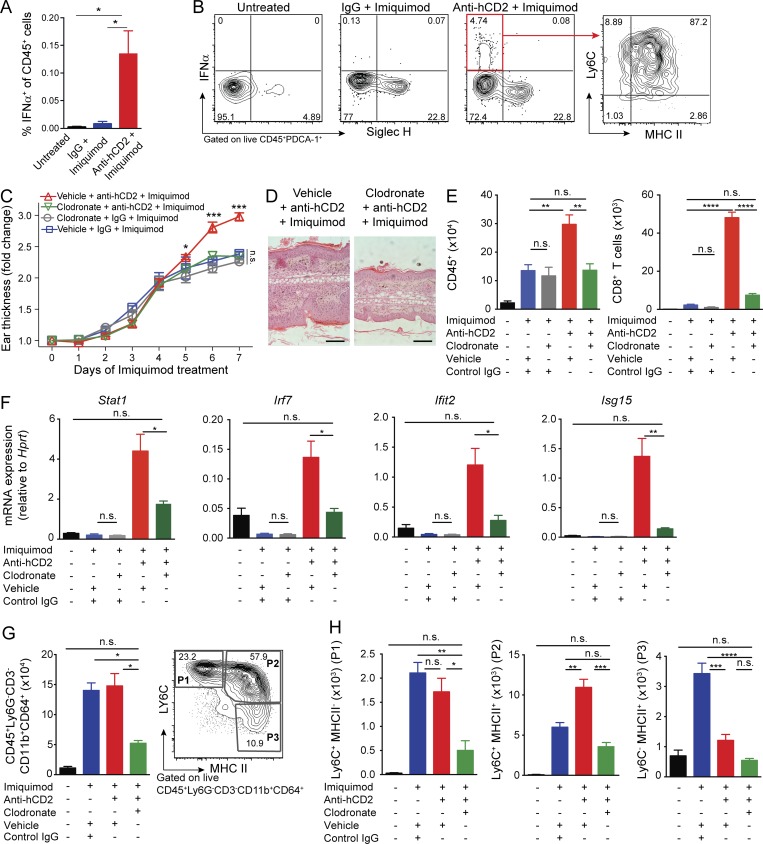Figure 3.
T reg cells suppress IFN-I production by restraining MNPs. (A and B) Flow cytometry analysis of CD45+ cells from cervical lymph nodes (stimulated with PMA/ionomycin for 4 h + BFA) of Foxp3hCD2 mice treated as indicated. (A) Percentage of IFN-α+ cells among CD45+ cells in cervical lymph nodes. (B) Surface marker expression of IFN-α+ cells pregated on CD45+PDCA1+ cells. (C–F) Depletion of MNPs using clodronate liposomes in mice treated with IMQ ± anti-hCD2. (C and D) Thickness of ear skin over the course of IMQ treatment (C) and representative H&E staining (D). Scale bars, 200 µm. (E) Quantification of skin CD45+ cells and CD8+ T cells by flow cytometry. (F) qPCR analysis of interferon response gene mRNA in skin tissue. (G) Total CD45+Ly6G−CD3−CD11b+CD64+ cells isolated from skin tissue assessed by flow cytometry (left) and MNP “waterfall" gating strategy P1–P3 (right). (H) Total cell numbers of P1–P3 assessed by flow cytometry. Error bars: means ± SEM. Statistics: one-way (A and E–H) and two-way ANOVA (C) with post-hoc test. Data are representative of one of three experiments with n ≥ 4 (C, D, G, and H) or one of two experiments with n ≥ 3 mice per group (A, B, E, and F). *P = 0.01–0.05, **P = 0.001–0.01, ***P = 0.0001–0.001, ****P < 0.0001, n.s., not significant.

